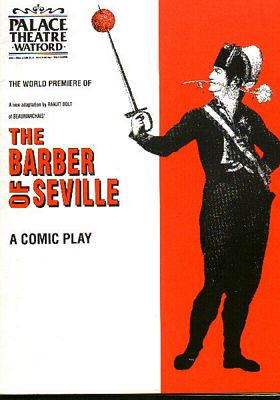
Cast
| Count Almaviva | Oliver Parker |
| Figaro | Lee Cornes |
| Rosine | Helena Bonham-Carter |
| Bartholo | Barry Jackson |
| Jose/Notary | Jon Rumney |
| Bazile | Andy Greenhalgh |
| Dancer | Gemma de la Cruz |
| Musician | Matthew Spring |
Review
Stripped of its operatic splendour, music and song, The Barber of Seville becomes a crisp little comic play of love, lust and intrigue. It was all over by 9.30pm – a brave act at a time when most theatre performances tend to be dragged out as if to give value for money. This is excellent value, a sparkling little early spring offering of vivacious wit, inconsequential fluff with a few touches of fine flamenco dancing as the only elaboration.
Helena Bonham-Carter slips into the part of Rosine with a neat edge of coquettish mischief, leaving her meaningful maiden parts miles behind, as she twists fate in her favour by ridding herself of her lecherous old warden, Bartholo, in favour of her young lover, Count Almaviva. Assisted by humorous lines in Ranjit Bolt’s new translation and adaptation, she is a new woman who “when doubt passes out,” cuts the nonsense by accusing her warden of being an “old toe-rag” and glibly informs him, when accused of being suspiciously quiet, that she will “sew louder.”
At the start, Lou Stein’s production slightly suffers from the tightrope of crisp comedy being a bit too slack with an almost too delicate touch of the period piece, which begins really to sparkle with more robust handling in the second act. Oliver Parker’s Count Almaviva has the charismatic power to tame the shrewd little object of his desire with both charm and wit and wins over the audience with a well-balanced comic scene disguised as a stand-in music teacher. As his servant, Figaro, Lee Cornes uses the body language of a true comedian, and pleasingly understates the character’s superior intelligence in dealings with his social superiors, especially Bartholo, mercifully kept free from the farcical by Barry Jackson. Bruno Santini has created an impressively atmospheric set and that special touch, the flamenco dancer Gemma de la Cruz adds the perfect frill to a period piece polished up for the Nineties. It’s a pity the title is likely to put off younger audiences who no doubt would enjoy the pithy humour and brief encounter with a classic.